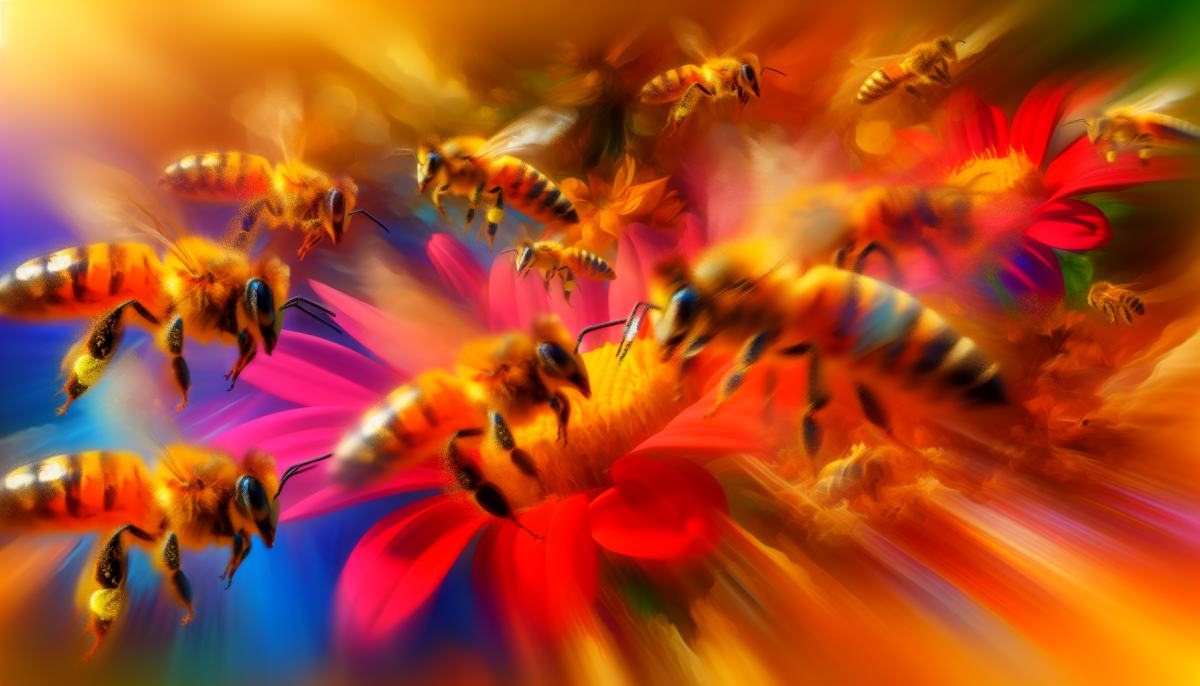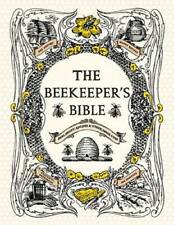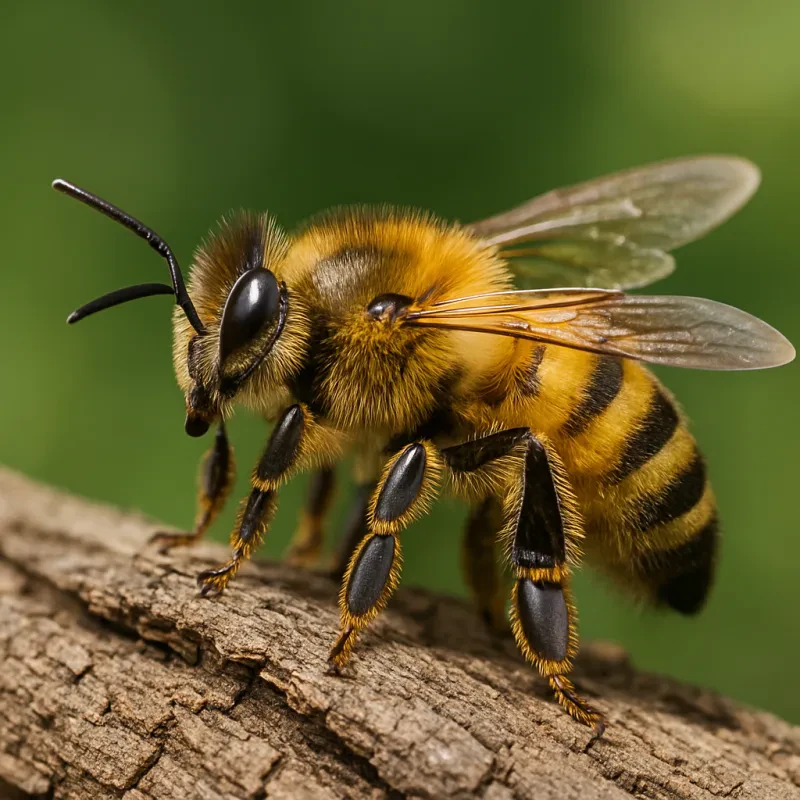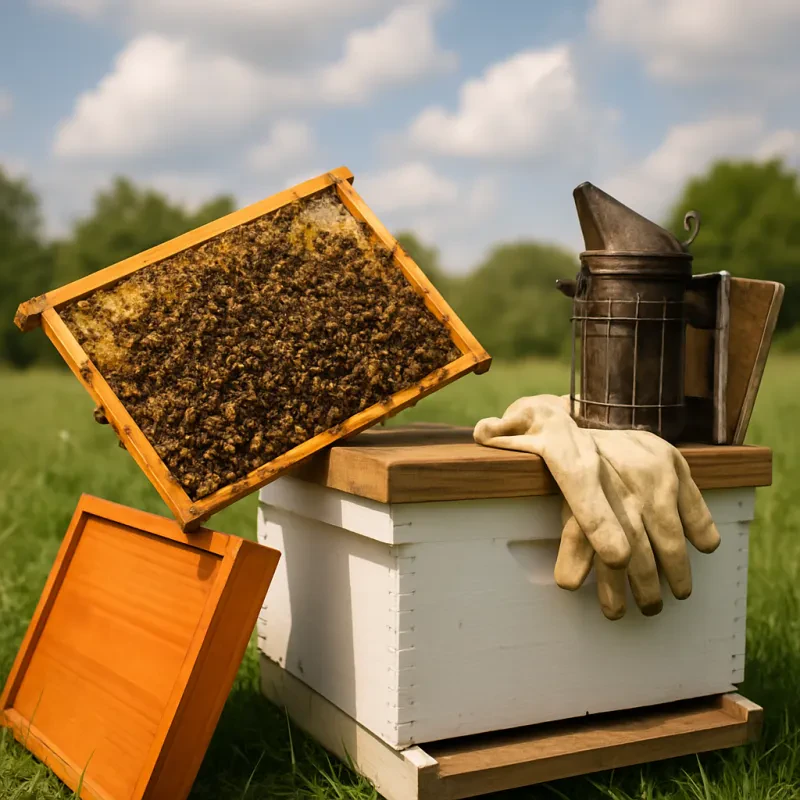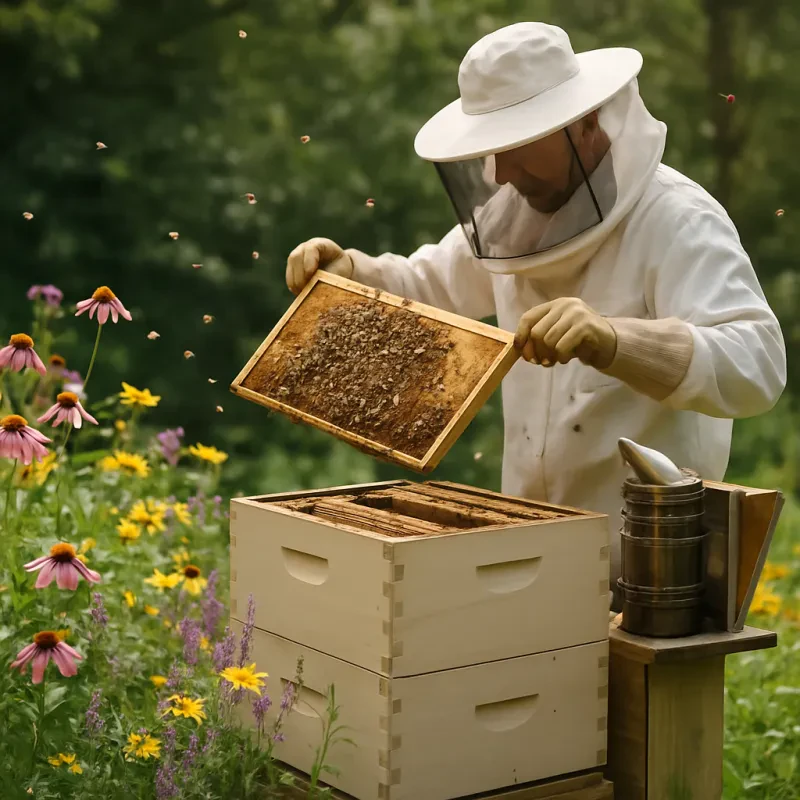Beekeeper's Bible: Bees, Honey, Recipes & Home Applications
The ultimate guide to bees and honey - a comprehensive resource for beekeepers and enthusiasts alike
Product information
$18.79
Product Review Score
4.29 out of 5 stars
210 reviewsProduct links
In the vast tapestry of Earth's biodiversity, few relationships are as emblematic of nature's interconnectedness as that between honeybees and flowers. This intricate dance of pollination and nectar collection underscores a mutual dependence that has evolved over millions of years, shaping not only their own survival but also the health of ecosystems and human agriculture. This article explores the profound significance of each to the other, shedding light on a symbiotic relationship that is both delicate and fundamentally crucial to the natural world.
The Essence of the Relationship of Honeybees and Flowers
At the heart of the relationship between honeybees and flowers is a beautiful symbiosis. Flowers rely on bees for pollination, the process by which pollen is transferred from the male structures (anthers) of a flower to the female structure (stigma) of another flower, leading to fertilization and the production of seeds. Honeybees, in search of food, collect nectar and pollen from flowers. Nectar provides essential carbohydrates, while pollen offers proteins and fats. As bees move from flower to flower, they inadvertently transfer pollen, thus fulfilling their role in the reproductive cycle of plants.
The Role of Honeybees in Pollination
Honeybees (Apis mellifera) are among the most efficient pollinators in the animal kingdom. Their bodies are designed to collect pollen, thanks to their hairy structure, and they possess a behavior known as "flower fidelity," which means they prefer to visit flowers of the same species during a foraging trip. This behavior maximizes the chances of cross-pollination, as pollen is more likely to be transferred between flowers of the same species.
The impact of honeybees on pollination cannot be overstated. They are responsible for pollinating a wide array of crops, including fruits, vegetables, and nuts, significantly contributing to global food security. It's estimated that one-third of the food we consume each day relies on pollination mainly by bees. Their work bolsters the production of crops, enhancing not only yield but also quality.
The Significance of Flowers to Honeybees
Flowers are not merely passive beneficiaries in this relationship; they have evolved numerous adaptations to attract their buzzing benefactors. These include vibrant colors, enticing scents, and even ultraviolet patterns invisible to the human eye but incredibly attractive to bees. Furthermore, flowers offer nectar and pollen as rewards, substances critical to the diet of honeybees and their larvae.
The evolution of flowers has been significantly influenced by their relationship with pollinators like honeybees. The diversity in flower shapes, colors, and scents is a testament to the various strategies plants have developed to attract and reward their pollinators. Some flowers have even evolved to specifically suit the characteristics of honeybees, ensuring that when bees come to collect nectar, their bodies touch the flower's reproductive organs, thus facilitating pollination.
The Impact of Honeybees on Ecosystems and Human Agriculture
The symbiotic relationship between honeybees and flowers is a cornerstone of most terrestrial ecosystems. By facilitating pollination, honeybees not only enable the reproduction of a wide variety of plant species but also contribute to the genetic diversity within plant populations. This diversity is crucial for ecosystem resilience, helping ecosystems withstand and recover from disturbances.
In terms of agriculture, the value of honeybees extends far beyond the production of honey. Their pollination services are estimated to be worth billions of dollars annually to the global economy. The decline in honeybee populations due to factors such as habitat loss, pesticide use, and disease poses a significant threat to food security and biodiversity. Recognizing the critical role of honeybees, conservation efforts are underway worldwide to protect these invaluable pollinators through practices like habitat restoration, the reduction of pesticide use, and the support of beekeeping.
Challenges and Conservation of Honeybees
Despite their importance, honeybees face unprecedented challenges. Colony Collapse Disorder (CCD), a phenomenon where worker bees abruptly disappear, leaving behind a queen and immature bees, has been a significant concern. While the exact causes of CCD are complex and multifaceted, they are believed to include parasites, viral and bacterial infections, pesticide exposure, and nutritional stress due to the loss of flowering plants.
Conservation efforts are crucial in safeguarding the future of honeybees and, by extension, the ecosystems and human food supplies they support. These efforts include promoting sustainable agriculture practices that reduce pesticide use, conserving and restoring natural habitats to provide bees with a rich diversity of flowering plants, and supporting research into bee health and management practices that can mitigate the impacts of diseases and pests.
The relationship between honeybees and flowers is a poignant example of the delicate balance within nature, highlighting the interdependence of species. As we strive to understand and protect this symbiotic relationship, we are reminded of the broader connections within ecosystems and the importance of biodiversity for the health of our planet. The dance between honeybees and flowers is not just a marvel of nature; it is a critical process that sustains life on Earth, including our own. In recognizing and preserving this relationship, we ensure the continued flourishing of our natural world and the stability of our food systems.
$18.79
4.29 out of 5 starsBeekeeper's Bible: Bees, Honey, Recipes & Home Applications
The ultimate guide to bees and honey - a comprehensive resource for beekeepers and enthusiasts alike
Product information
Product Review Score
Product links
